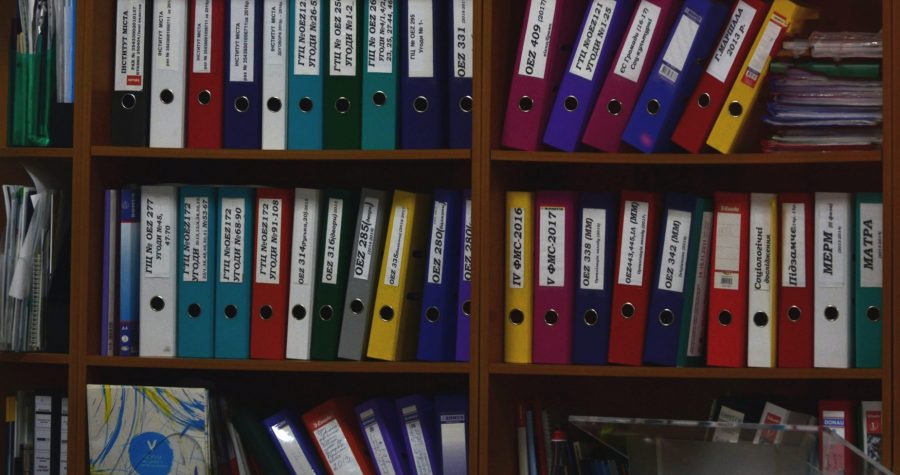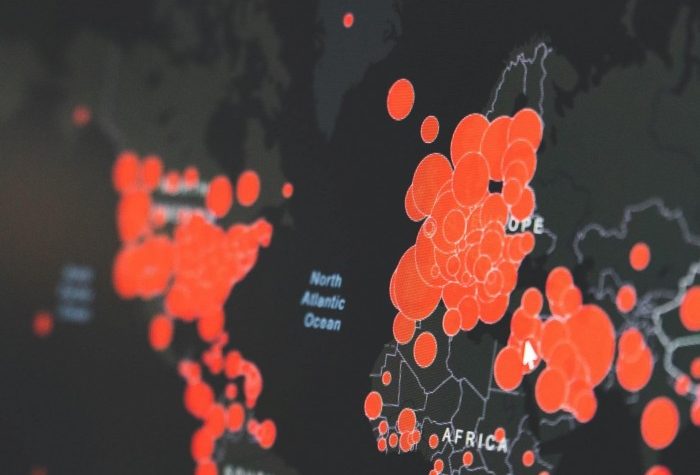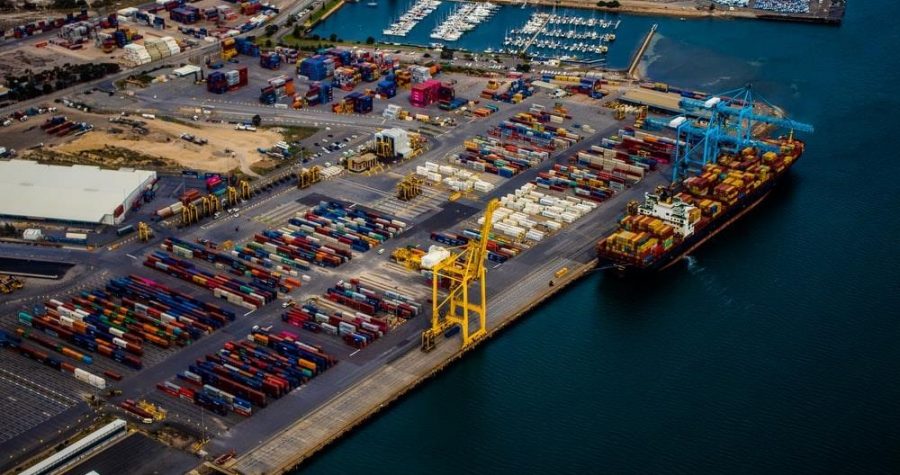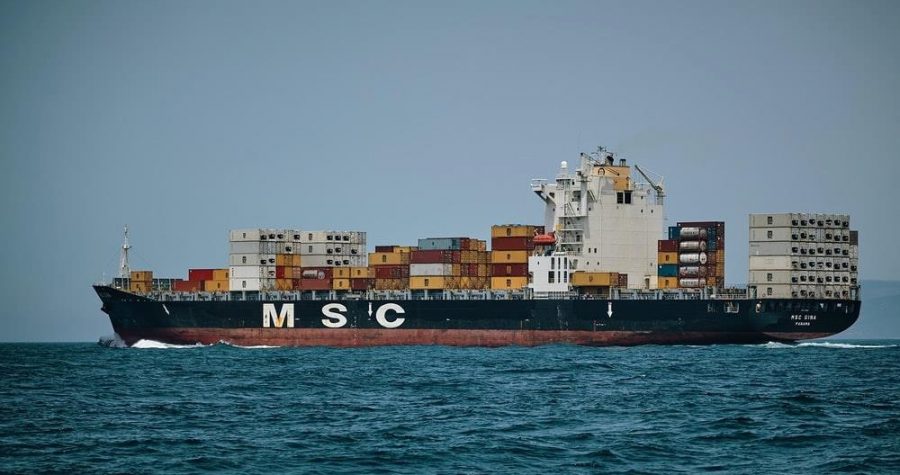Common Import / Export Documents

Start your day with Continental breakfast, Moroccan Couscous for the Lunch Hour, and finish off with a Chinese take-away for Dinner. Everyone fancies a versatile food-day. In today’s global world, people want to relish food items from all around the world. They like to share their mealtimes on Social Media, create small digital stories with the different types of gourmet from a diverse variety of countries. Food Industry has given meaning to the term GLOCAL in the real sense by exporting/importing the Local foods on a Universal scale. People want to eat their Olives from California, Mangoes from Pakistan, Pasta from Italy, Spices from India, and the list goes on. The industry that serves the international edible needs requires documentation. We have jotted down a listing for your comfort so that you can check the list when you are exporting your items or importing those.
Table of Contents
These papers are of following natures:
Lading Bill
is a paper requirement of the Government, which is a signed contract between carrier and seller. It is to emphasize the Cargo procedures, which include goods type, destination, origin, and it serves as a receipt. The shipping company compiles this document with the help of Exporter. It also comes with waybills of airways or
Commercial Invoice
is another obligation, produced by the Exporter to interpret the complete transaction from start to end. It includes essential information for each party involved in the process. These parties are banks, brokers, customs, shippers, and importer.
The Export Packing List
that allows authorities to know precisely what is in the container you are sending. It contains a piece of detailed information about which product is being exported, the quantity, the packaging… It is a mandatory document when shipping your product as it permits to customs, insurance and other partners to clearly evaluate the value of the transported goods and protects you as well when goods are missing at arrival or from any other inconvenient that might cause losing products before it gets to your client.
Certificates of Origin
, Manufacturer, and Inspections come in Food items are perishable; this credential ensures Quality and Quantity. Traders need to declare the origin as many countries have restrictions in place, and the importing authorities need to verify the source. Production certification requires a notarized paper depicting the Manufacturer’s details to make sure the product is ready for shipment.
The Health Certificate
is a document delivered by the competent authorities. It officially certifies the quality of the product. It is a crucial document, as countries do not have the same standards when it comes to quality, origin and ways the products have been manipulated. Indeed, before entering a country, the authorities need to make sure that your product is allowed in it and won’t breach the norms.
Insurance
papers are generally the insurance policy for the goods on-board. One needs to buy Insurance to prevent any significant losses or to take care of the liability. It needs to list down the specifications of the product, the extent of coverage, and proof of Insurance to satisfy buyers or the host country. The Exporter could produce this with the help of a broker, or the Insurance Company can issue the report to provide security of the goods in
Commercial Demand Note
or the Invoice is the reflection of the Sales Contract, which shows the agreement between both parties. The details contain Payment Conditions, Goods Sold, and the Trade Terms. The importer will use it for Customs’ clearance, and the document provides a legal binding for the Exporter. It is best to consult your legal advisor beforehand to work on this vital
Quotation. of Terms is the detail of delivery, payment, import, export, quality, quantity, and price of the products shipped. The seller is to cultivate a Quotation before actually starting the process, and it is roughly the first step of the trade
Letter of Credit
is a Bank’s guarantee to the Exporter to pay the decided amount and to emphasize on the satisfactory completion of essential documentation. This financial document secures both parties involved in the
If you have closed a sale/purchase successfully and are getting the documents ready for the process, the list mentioned above will sort you out. Some countries might require other documents.
How COVID-19 crisis impacts food industry producers?
The virus outbreak is a worldwide tragedy and has a lasting effect on the producers of the food industry. Because the rumors revolved around more than facts in the pandemic, people were worried about food security. Food security is the availability of food items to all people, and it was questioned everywhere. Consequently, the general population rushed towards panic buying and started storing canned foods and long preservable food items.

The supermarkets and grocery stores were emptied out as a result, and a sudden rise in demand troubled many local food industry producers. With the closure of international borders, imports and exports are out of the equation. There is a dire need for local food producers to fill the gap. Many governments continued with the life-aiding products even in the lockdown. Grocery stores are open with limited operative approval. This creates a huge opportunity for local food industry producers.
Whereas the international food industry has seen a disastrous impact amid the crisis. As the epidemic is completely unprecedented, it moved every corner of the business world. The transportation restrictions, shipment bans have affected every profession. Russians have proposed the idea of keeping their grains’ production inside the country and not exporting the product. These crises are impacting food producers.
Although we empathize with the persons affected and their families by the virus, the financial crisis it has brought to the food industry is immense. We could have a food-crisis at our hands in no time. There are huge losses in incomes for the Food-Industry- Producers. Meat processing plants are closed in some countries, hence impacting the supply chain.
The producers who relied heavily on exporting their food items are suffering the worst with the border controls, and pandemic tensions. People are avoiding the use of food products coming from other locations, as it might contain virus imprints along. COVID- 19 pandemic has impacted the food industry producers who only, or mainly, exported their goods. Now, they are either closed or smart business persons who are looking to utilize the opportunities in the local markets.
Hoarding by consumers resulted in sudden empty shelves with no demand in the coming days from those buyers. Since the panic purchasers have stocked up the food items for weeks to come, they will not be buying those food items again in the coming weeks. Do not take empty shelves as a huge demand for granted, before storing excessively in your warehouse after filling the shelves, consider the actual demand.
Since eat-in at all restaurants is prohibited in most countries around the globe, there is a huge decrease in commercial food items. The food industry producers who were manufacturing commercial food items have been hurt badly. Products such as potatoes and milk have seen a sheer decline in the market’s demand.
Price gouging has also impacted the food industry negatively. Merchants have increased the prices above the agreeable rates without rationalization. This has gained them short-term profits but it has impacted the food industry in the long term categorically.
How to mitigate currency risks during the COVID- 19 crisis
World economics is rapidly changing around the globe because of the on-going COVID19 crisis. Currency rates are fluctuating rapidly and creating global unrest. Many countries and experts have sat together in dismay to work out the solutions to the resultant economic crisis. Currency risks during the COVID-19 crisis are alarming.

Only recently, the world economy had seen the Oil crisis due to COVID19. The money matters were brought under questions as the next possible victim of the virus. Patients are put in quarantine, and the populous at large is observing self-quarantine and social distancing practices to avoid the spread. There are border restrictions, travel bans, hotels and restaurants are closed. This unforeseen situation has created a demand shock for currency. Every corporation knows the currency risk could hurt their sales. Still, they are somewhat secretly hoping everything will turn out for the best in the future.
The worldwide supply chain is disturbed, and the end-to-this crisis is nowhere to be seen as of now. People are concerned and threatened by the endemic. Every businessperson is worried about what is going to happen soon. Outlets are closed; people are reserved about spending and going out. This situation has created a supply disruption for bills and notes. Also, the virus is supposedly spreading through hard cash. People are getting affected when they touch a contaminated currency note. Cashiers at banks are getting infected, banks are being sealed, and it is going out of control.
One can mitigate the currency risks during the COVID19 crisis by using a hedging instrument called forward contract. This contact locks the currency rate once agreed upon by both parties. This instrument is used by organizations when currency fluctuation is evident, and the deal is created to alleviate the currency risks.
The contracts made amid COVID-19 could carry additional risks as the customer might not be able to pay on the due date. The financial institutions will charge penalties for that delay, and both parties could suffer from it. Even after considering these risks, a Forward Contract is still the best practice to carry out in the pandemic.
Another hedging instrument provided by banks and other financial institutions is the FX options, and it is more flexible in its’ nature. There is one demerit to that with many demerits. The disadvantage is having to pay an upfront fee. However the advantages come in numbers, such as flexibility is phenomenal when comparing with Forwarding Contracts. The choice of FX options is another benefit, as many institutions provide FX options for the sales and purchase of your goods.
A business could reduce the currency risk if they don’t have to lock up their capital in the dealings. There are guarantees provided by your banks and you will not need to put up with collateral. These guarantees are Forex Facility Guarantees (FXG). Apart from these documented strategies, one can learn to predict currency risks when developing budgets for your company. You could lock the currency rate internally for your financial budget, to avoid unforeseen risks involved. Keep the predictions on the lower side as it is better to prepare for the worst.
How digital marketing can help food brands to expand internationally

Sure, there are ways you try to start with extensive marketing campaigns to expand your food brands internationally. And yeah, the advertisements on international TV channels, food magazines, and billboards are great for your brand. But is it enough?
There are 3 billion social media users in today’s world, and 60% of the population [reference] has turned digital. The rich have a particular selection of brands, which is not changed easily. The poor have a scarcity of resources to purchase efficiently. Hence the most favorable segment to promote your products is to focus on the middle class and the keywords that they use. The middle class is rapidly expanding around the globe. Since the inflation rate is not coming down, the riches are limited, and the poor have evolved to the middle-class. A person who searches on the web for food brands, cooking channels or eat-outs, will always receive notification about the related food brands.
Table of Contents
Imagine the data, which is stored as cookies to interpret the individual mindset, and how it could be used to market one’s products online. You would know before promoting your product that you are getting the right audience. This is a universe of digital marketing, based on keywords and the trends. Some people call it internet marketing too. Digital marketing is widely known as the marketing type that uses computers, cell phones, and other electronic platforms. Search engines and other channels store customer’s preferences and online behavior, a digital marketer, will focus on those individual trends and promote the product accordingly.
There are several methods of how Digital Marketing can help your food brand to expand internationally. You should use all of those methods, preferably to brand your product digitally in an effective manner. Below, a brief explanation of how digital marketing can ring true for food brands going global.
A blog for your food brand:
A food product needs to be seen out there in the digital world, and blogging about your brand is the best way about it. Blogs generally attract organic traffic fed into your website and ensure the digital success of your food brand. You could write about spreading awareness, particular minerals used in your product, the health merits of your products, etc. The blogging technique is extremely efficient for expanding your food brand on an international scale.
Online Ads:
You should also use Facebook ads or google ads to bring relevant traffic to your blog posts. You ought to have focus keywords for each blog to attract organic visitors. You could create a short ad, and Google Adsense or Facebook marketing will help display that to the target audience. Also, promote your events on social media. You can run those online ads yourself, or the freelancing websites have a plethora of options for you.
Influencer Marketing:
YouTube, Instagram, or Facebook have popular food influencers, you can use them to promote your food products at quite cheaper rates than TV Celebrity ads. These techniques are how you use digital marketing to promote your food brand worldwide.
Are trade agreements efficient for developing countries

Developing countries need a shot at going big, and a trade agreement might just provide that. Some people believe that trade agreements are beneficial for developed countries but little did they miss out on the opportunities it creates for underdeveloped nations. The smaller republics have a scarcity of resources; hence they can not score favorable trade agreements. These less established countries are often rich in a few and poor in the rest when it comes to capitals. A positive trade agreement can change the fate of a nation, and aid the economy of those countries to grow faster. It could lead to the two most positive outcomes; that is, relaxation in sanctions and agreements of foreign aid.
Trade Agreements at the international level
There are two prime categories of trade agreements at the international level:
Regional Agreements – A group of countries sit together and formulate an agreement for the common good. There are many trade unions in different continents that are articulating these contracts to benefit its members. The EU and World Trade Organization are the biggest examples of this nature.
Bilateral Agreements – This type of trading treaty is signed by two countries. It charts down the rules and regulations which both countries will abide by. This bi-national settlement is always constructive for both countries.
An under-developed country, if pursuing trade agreements keenly, often land on bilateral and investment agreements with neighboring countries. These trade agreements prove profitable to both the countries, and the deal does not need to be made with only a developed country necessarily. The trade agreements can form between two less-developed nations. It provides a better quality of life for the parties involved in the trade agreements. These arrangements are extremely efficient and provide better economic resources, increased production capabilities, and improved foreign relations. Both
The countries in the developmental stage often have a lesser standard of living or quality of life than the developed world. If the Government proves to be strategic, they register with memberships of worldwide schemes, such as ECOTA, SAARC, and SAFTA. These mutually beneficial trade unions ensure the manufacturing, buying, selling favorable across the board. They often form a free trade area; consequently, it enhances the level of economic growth.
When a trade agreement lowers the border difficulties and trade barriers, it does not only prove efficient for the governments but the population as well. The end consumer takes great benefit from the variety of goods available in markets. Quality products are ensured, and even lower prices can come into play after a good business agreement among different nations.
Trade agreements provide an effective balance for developing nations, and the overall economic operations are improved. The growing industries of a less-developed country see a burgeoning rise of demand if they can export their merchandise to other countries. Those factories will be given assurance of a better business opportunity by the contracts among governments. This creates an opportunity for the local industry to grow and hire more employees to meet business needs. Lower the tariffs are, lower the costs will be; resultantly, the well being of those nations will improve.
Management of international sales
International sales are an integral part of an organization in recent years. The common practice to enhance the business scope and grow the sales channel is to enter the multinational hemisphere. The reason for this endeavor is the saturation level of local markets worldwide. To mushroom the annual turnover, every business person looks for selling its products in overseas countries.
Although International selling is profitable and turns around the fate of an organization, it is altogether difficult to handle as well. The supervision of an offshore unit seldom becomes challenging to look after without the physical presence of the owner. Therefore, it is essential to discuss the internal strategies and external management techniques applied by the offices working abroad.

Furthermore, the primary problems include results’ inefficiency, import/export restrictions, and forex rate fluctuations. If a person in business starts to consider the risk factors involved without realizing the potential growth it may possess, they might start-off the wrong track. The simplest way is to outsource your foreign affairs to a competent company or recruit a sales-manager. These professionals organize and completely style-out the working to bring out the desired outcomes.
There is a growing trend of hiring managers, with the expansion of sale transactions outside the home country, who control the offshore management of sales. These managers are equipped with the ability and skill level to plan and execute the organizational vision. This hiring is an efficient way to ensure the business prospect sees its full potential.
The cross-cultural sales network needs an interface best designed to meet the growth targets. When you combine a motivated workforce with training and diversity, their skills bring about the desired results. Apart from training & development, we suggest that your HR should start employing expatriate recruits. It means gaining a competitive edge over the existing corporates of that specific country.
Building a relationship is the basis of International Sales.
thefoodtradehub.com Tweet
Marketing Management of the offshore sales division is crucial. One needs to understand the cultural requirements and analyze the current trends to come up with a promotional strategy. Corporates are adhering to the most diverse and appealing advertisements. When you are selling abroad, you need to transform your positioning and create a positive brand image in the minds of consumers.
Building a relationship is the basis of International Sales. You cannot control the sales operations without having a network of references. Those links will help you find investing opportunities, increase the clientele, and grow your sales. Moreover, you need to develop bonding with your customers so that your brand is socially acceptable.
In the scenarios where you have distributors, your negotiations must be conducted in a well-organized fashion. You will need strategic goals, which are already set, to be on the same page as your wholesalers. This local network of business partners will play a key role in shaping your overall business in the country.
Internal management of International sales is all about hiring the right staff, investing in their training and development, and recruiting a sales manager. External management involves researching the right distributor, aligning the goals with them, advertising your product effectively, and building local relationships.
Sourcing: the best strategies to find the right suppliers

Table of Contents
The right supplier is to the business what a better half is to her spouse. It is the right-bone of your corporation, and finding the best supplier is as tricky as it gets. A company needs to identify the best strategies to source the right suppliers in a way aligned with the company’s goals. Therefore, the first preliminary step to strategize the procurement process is to identify the specific needs of your organization. Take budget for an example; if you do not plan to find a high-priced supplier, it will short-list the available vendors automatically. Thus, the recognition of organization-specific demands is crucial. Now let us look at how to source your supplier with the top strategies.
Finding a competent supplier is a make or break situation; hence many companies have a procurement department for the job. If you are a small company or don’t have a procurer, the best practice would be to equip your human intuition with focused and systematic criteria. These measures will include Delivery methods, Payment conditions, Time management, assurance of quality, and mutual references. If you go searching for a supplier without an excellent working, you will search for a needle in the haystack. Reviewing hundreds of suppliers without objectivity would be over-kill and efforts that are not the requirements of the task.
Bids:
Procuring the quality suppliers could be either a bull’s eye or a bullet to the head. The easiest way to start the process is by sending out a call for bids, where you gather all the quotations and proposals. You could develop a questionnaire and ask the suppliers the services you require. To elaborate, you need to ask about the delivery schedule further, quality standards, work out the payment methods, and their SWOT. This survey will help you identify and isolate the desired pool of suppliers, which will be easy to choose. After collecting results, you could summarize the scope of services rendered, match them with your needs.
You need to assess all the bids by evaluating the value they could bring to your business. The idea of sourcing the right supplier is to bring value to the overall organization. Make sure that the suppliers answer all of the questions for your better understanding of the services they will provide accordingly. You could also conduct interviews where a panel of your management can discuss the services with the short-listed vendors.
Performance:
You will need to analyze the supplier’s capacity. Firstly, ask for the references and reviews of their previous buyers. Then decide whether they match your requirements and their capability insured to deliver on time. The best strategy is to chart out possible outcomes and estimate the traders’ operational capacity. While on-job, you should arrange performance appraisals and treat them as one of your own. In addition, the supplier’s performance needs to match the efforts he will be putting in.
Techniques:
It is useful to research on their delivery techniques and the level of technology they use. Make sure the supplier has the necessary licensing and paper works. These strategies will help you nail the dilemma of sourcing a supplier, which proves best for your company.
Customs procedures for food industry sector

Customs procedures of a country need to be modernized in such a way, which encourages its food industry sector’s growth. If you are a food trader, either it is importation or exportation, customs clearance remains a hindrance in the back of your head until it is cleared. When you are selling or purchasing your food items in a foreign location, the statuary requirements of different countries vary. Therefore, one needs to apprehend the legislations and regulations of the state where you intend to buy or sell the merchandise. These obligations must be met before aiming to clear the customs.
Customs is the state department, which controls the flow of imported goods and collects fees levied by the Government. Customs agency makes sure that the animals you are trading, or perishable food items, are according to the laws of importing land. Although every country has a couple of measures specific to their geographical needs, we will discuss standard customs procedures below.
Table of Contents
Customs Documentation
Firstly, you must gather the required documents for the customs process. These compulsory papers are Bill of Lading, Commercial Invoice, Insurance Certificate, Purchase Order, and Bill of Entry. The documented materials you include must have the perishable details of your food products. Because your products could expire, the dates and other charts need to be interpreted in the documents. Shipping paperwork is essential and could vary from country to country. You could be trading canned food, or fresh fruits & vegetables, or farm machinery; it also needs to go through proper credential work. The customs certifications or bills must be obtained to clear the customs procedure.
Customs duty
The duty paid on imports, or in a few cases on exports too, is centered on the food items’ value or the size, etc. A Foreign food trader might be exempted from customs duty in most countries. Still, it will depend on the particular state where you are headed. There could be a tariff charge as well, a tax on importation and exportation, which is decided between governments. One needs to pay all the customs related fees to speed up the procedure. Especially for the food industry sector because you don’t want your goods stuck at the port and perish.
Electronic systems
Everything is transforming into online and digital forms, and customs is no different. European Union has programmed a CDS. A food trader will need to contact the designated portal and create an application. Many countries have adopted these electronically processed applications, and you need to understand the selected state’s automated procedures if any.
Declaration
The official paperwork of customs declaration provides details of shipment under trade. It would contain all the imported or exported food industry’s items in a list. Any company or individual, who is the owner of the shipment, can lodge the customs declaration by themselves or by representatives.
Inspection & Presenting the goods
Customs inspectors or relevant officials can check the shipment at any time. The person-in-charge of the consignment needs to present the merchandise to the customs office as part of the procedure.
How to choose freight solutions for export?
Exports business could turn tricky if you don’t get your shipments right, and things could go south quickly. You should choose the appropriate freight solution for trading internationally by considering the following tips.
Table of Contents
Prepare well
When you visit freight forwarder, and you have no homework with you, it will waste a lot of time and effort. You need to identify your objectives and research your industry niche. Decide which form of transportation and the size of the shipment you are going to require. You should chart out the job-specific services that your task demands. You must research the export treaties and other obligations as are necessary for your exporting business. Also, verify if the freight forwarder is authentic and registered with the relevant organizations. A company should always plan the required speed of delivery and cost of service, including the options of rail, sea, roads, and air.
Consider your options
There are many factors when transporting merchandise internationally. Freight rates, or the infrastructure costs like warehouses and the way-fare, play the deciding factor. Price impacts your decision, but one should not always go for the cheapest possible option, instead find value for money. The face-price might be more affordable, but when all the additional services, some of which are essential, are considered, then the process might be expensive. You should not fall for the asking price, and due research is what you must conduct, and this is how you choose freight solutions for export.

Arranging the right documents using a software
Many software is available in the market to do this task for you. When you need to confirm whether you have arranged all the necessary documents and those are typo-free, you can use the digital tools to save time. These apps/tools also enable you to email directly from the interface. Screening the package against the export regulations in place is possible as well. It would help you avoid the penalties. Using computer tools for exports is an excellent strategy. If you are using software for the surface work, you will choose the freight solution without much trouble and lesser costs.
The reputation of the freight service
Use your corporate network to gain knowledge of the reputation the freight service provider possesses. You could check their website for reviews, but it is always best to use your reference to conduct the research. Once you have determined that the transporter has the right reputation in the market, you could decide easily. The legitimate freight solution company would be able to provide you testimonies from their respected clientele. Additionally, their licensing documents and registration certificates could guide you as well.
Choose one with experience in your field
The freight solution, you are going to choose, needs to be professional and expert in handling the goods of your business. The food industry, for instance, could be a naïve field for the general shipment services. The products are perishable and delicate, which would require a skilful shipment. Take a look at the freight solutions your competitors are using. Best of luck!
Managing Exports Risk In The Food Industry
If the Chinese Yuan weakens relative to India Rupee (INR), import of Chinese toys in India becomes relatively cheaper and therefore adversely affects the sales of Indian toy manufacturer.
Many businesses are going global! The expansion of any enterprise has not entirely flourished without indulging in the export function. There could be many reasons for exporting your products, ranging from better prices & more significant margins to market niche & business share. Whatever your reasons are for the export business, you need to be prepared for the jittery wind along the way. It has high risks of transportation, demographics, cultures, stereotypes, laws, and lack of time management for every industry. It is imperative to manage those risks to grow your business through exports.
As far as the food industry is concerned, many developing nations largely depend on their food exports. With high dependence comes excellent preparation! They need to ensure food safety and quality, meaning their items should reach their buyers in the global economy as per their standards. Keeping the global supply chain intact and every country playing its part by maintaining food control measures can manage it. If it is a balanced fit between industries and the Government, then the risk factor is minimized.
Budgeting is an export-risk factor. It depends on foreign currencies that keep fluctuating. A company’s budget could see an incline or decline based on the rapid variation of forex rates. However, in reality, the currency fluctuations even impacts companies with no dealing in international markets. For instance, a domestic toy manufacturer, who is competing with traders importing toys from China, is also exposed to fluctuations in the prices of Chinese Yuan (CNY). If the Chinese Yuan weakens relative to India Rupee (INR), import of Chinese toys in India becomes relatively cheaper and therefore adversely affects the sales of Indian toy manufacturer.
The other types of risks involved with exports can be either related to payment, transportation, customs procedures, or insurance …
However, in reality, the currency fluctuations even impacts companies with no dealing in international markets. For instance, a domestic toy manufacturer, who is competing with traders importing toys from China, is also exposed to fluctuations in the prices of Chinese Yuan (CNY). If the Chinese Yuan weakens relative to India Rupee (INR), import of Chinese toys in India becomes relatively cheaper and therefore adversely affects the sales of Indian toy manufacturer.
If you export the product without clearing the debt first, there is the risk of non-payment. Especially when you are dealing with new clients with no prior credibility, it is best to receive cash in your account before supplying. In the case of a regular client, you may afford to take such small-scale risks based on previous experiences.
“What if your client refuses to pay you the amount before receiving the product?”
Credit sales constitute a significant risk involved in the export industry. If you shipped a container of grains, for instance, on a 20 days’ credit, and the party refuses to lift stock from the shipment yard due to any given circumstances. This interruption will delay the payments and disrupt your cycle of debts. There could also be a scenario where your client claims the delivered product is unsatisfactory; hence, the fee is not cleared in time. We can not emotionally or morally influence the buyer in export business, whether it is only the food industry or as a whole. However, if it was a local customer, we could set up a real meeting in an instance and resolve the issue.
What if your client refuses to pay you the amount before receiving the product? Many people in the trading business and particularly in the food industry use a Letter of Credit. This document is a financial instrument that is secure for both sides without any risk. The payment mechanism in the export business usually revolves around the Letter of Credit. We can manage this export risk efficiently by using this instrument.

There are many risk factors, but if one learns how to overcome them or manage them, rest is only a heavenly story. Generally, all industries face risks, and the food industry is no different. The only thing that matters the most is the management of those risks. You could manage them by avoiding credit, introducing a stable exchange policy, ensuring safer financial instruments, and maintaining the highest level of quality.
Share: Managing exports risk in the food industry

Ali Iftikhar
Ali Iftikhar is a Blogger from Pakistan and a Sales Manager with the experience spanning over a decade.
- ‹ Previous
- 1
- 2
- 3
- Next ›











